
The Australian Bureau of Statistics (ABS) yesterday released taxation statistics for the 2011-12 calendar year, which provided a key insight into why state budgets are coming under increasing pressure.
According to the ABS, stamp duty receipts on housing transfers declined by -6% nationally in 2011-12 to $11,657 million, with receipts -18% below the peak level of $14,289 million recorded in 2007-08 (see next chart).
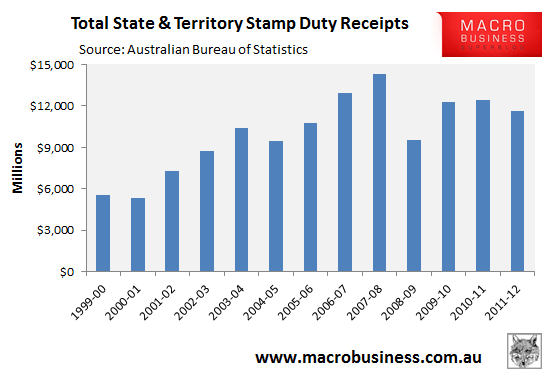
Below is a summary of stamp duty receipts at the individual state and territory levels.
New South Wales:
Stamp duty receipts fell by -7% in 2011-12 and were -10% below their 2006-07 peak:
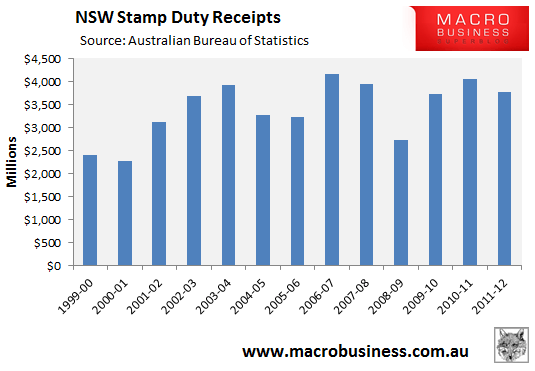
Victoria:
Stamp duty receipts fell by -14% in 2011-12 and were also -14% below their 2010-11 peak:
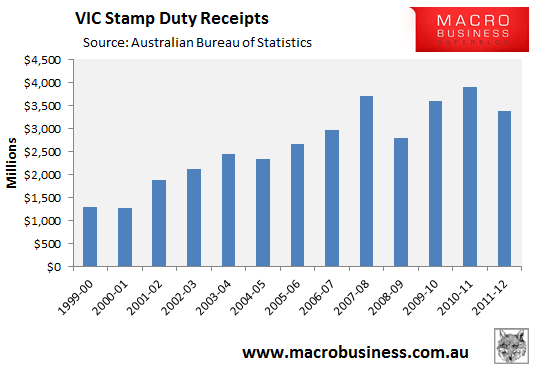
Queensland:
Stamp duty receipts rose by 14% in 2011-12, but were -31% below their 2007-08 peak:
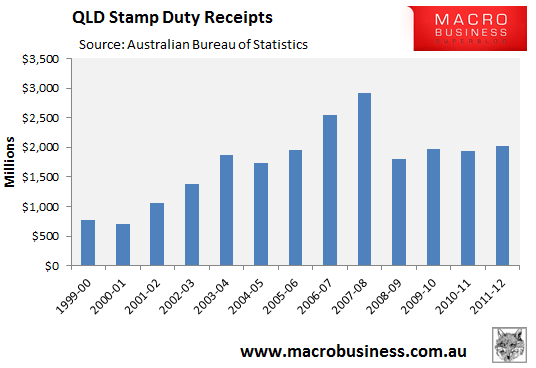
Western Australia:
Stamp duty receipts rose by 9% in 2011-12, but were -40% below their 2007-08 peak:
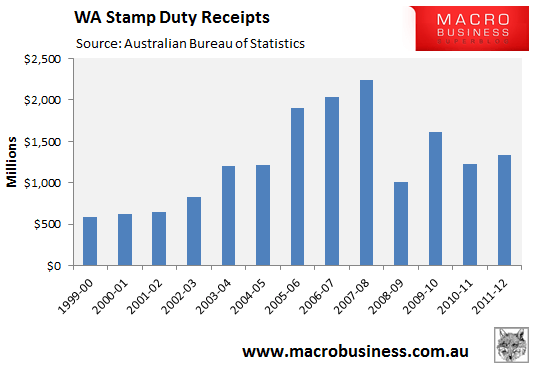
South Australia:
Stamp duty receipts fell by -13% in 2011-12 and were -25% below their 2007-08 peak:
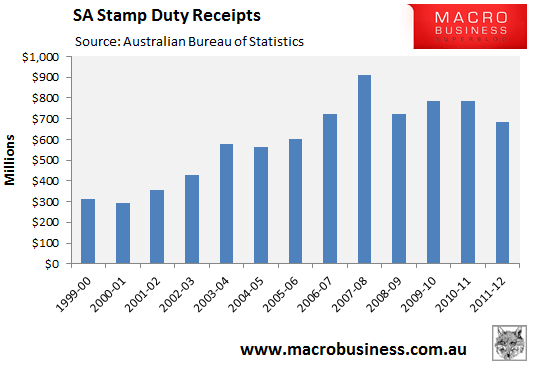
Tasmania:
Stamp duty receipts fell by -6% in 2011-12 and were -31% below their 2007-08 peak:
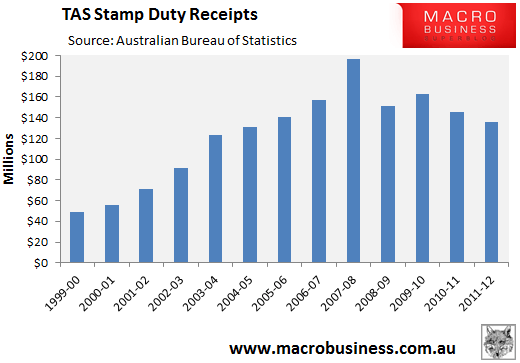
ACT:
Stamp duty receipts fell by -12% in 2011-12 and were -31% below their 2009-10 peak:
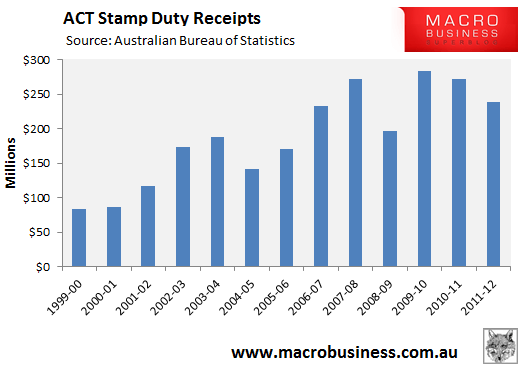
Northern Territory:
Stamp duty receipts fell by -9% in 2011-12 and were -27% below their 2009-10 peak:
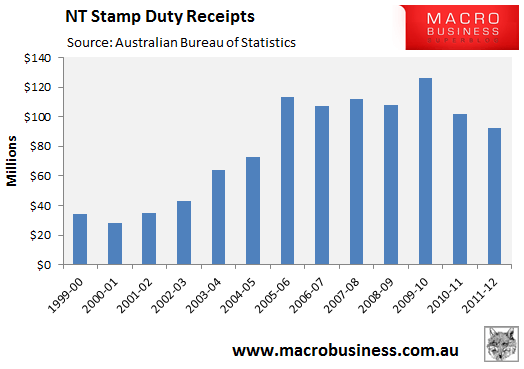
The outlook for stamp duty receipts in 2012-13 remains fairly soft, but should record some improvement on 2011-12. The total number of home sales across Australia in the second half of 2012 registered a small increase which, when combined with recent price appreciation, suggests stamp duty receipts will increase at the national level when the 2012-13 tax statistics are released by the ABS this time next year (see next chart).
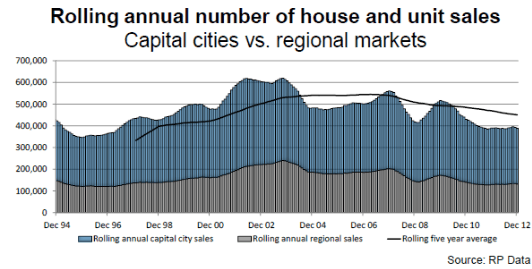
That said, with housing turnover still subdued overall, and prices yet to recover to their previous peak levels, the golden days inexorably rising stamp duty receipts are over for Australia’s state and territory governments, and they will likely remain under significant financial pressure.
unconventionaleconomist@hotmail.com

